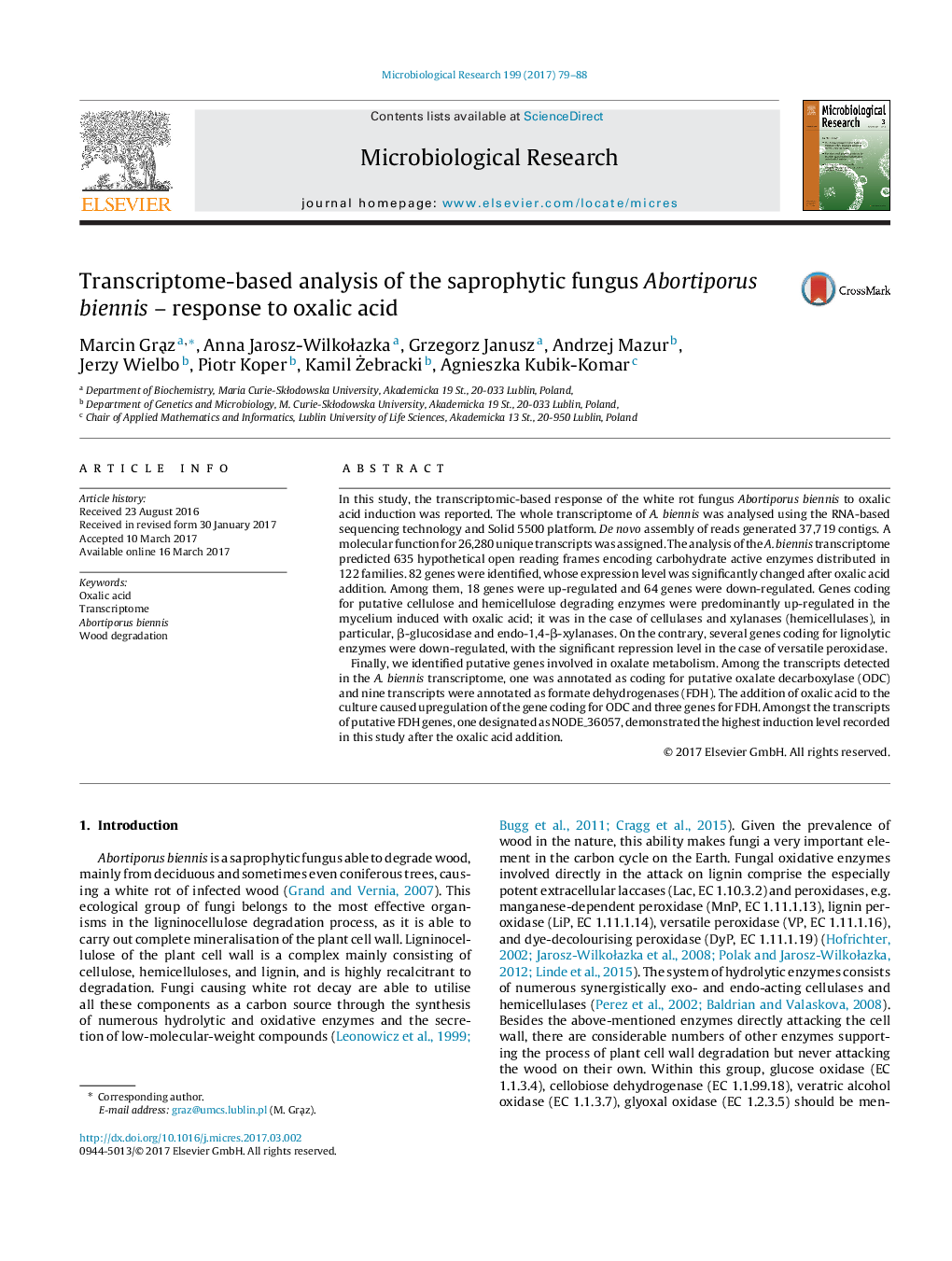| Article ID | Journal | Published Year | Pages | File Type |
|---|---|---|---|---|
| 5522480 | Microbiological Research | 2017 | 10 Pages |
In this study, the transcriptomic-based response of the white rot fungus Abortiporus biennis to oxalic acid induction was reported. The whole transcriptome of A. biennis was analysed using the RNA-based sequencing technology and Solid 5500 platform. De novo assembly of reads generated 37,719 contigs. A molecular function for 26,280 unique transcripts was assigned. The analysis of the A. biennis transcriptome predicted 635 hypothetical open reading frames encoding carbohydrate active enzymes distributed in 122 families. 82 genes were identified, whose expression level was significantly changed after oxalic acid addition. Among them, 18 genes were up-regulated and 64 genes were down-regulated. Genes coding for putative cellulose and hemicellulose degrading enzymes were predominantly up-regulated in the mycelium induced with oxalic acid; it was in the case of cellulases and xylanases (hemicellulases), in particular, β-glucosidase and endo-1,4-β-xylanases. On the contrary, several genes coding for lignolytic enzymes were down-regulated, with the significant repression level in the case of versatile peroxidase.Finally, we identified putative genes involved in oxalate metabolism. Among the transcripts detected in the A. biennis transcriptome, one was annotated as coding for putative oxalate decarboxylase (ODC) and nine transcripts were annotated as formate dehydrogenases (FDH). The addition of oxalic acid to the culture caused upregulation of the gene coding for ODC and three genes for FDH. Amongst the transcripts of putative FDH genes, one designated as NODE_36057, demonstrated the highest induction level recorded in this study after the oxalic acid addition.
